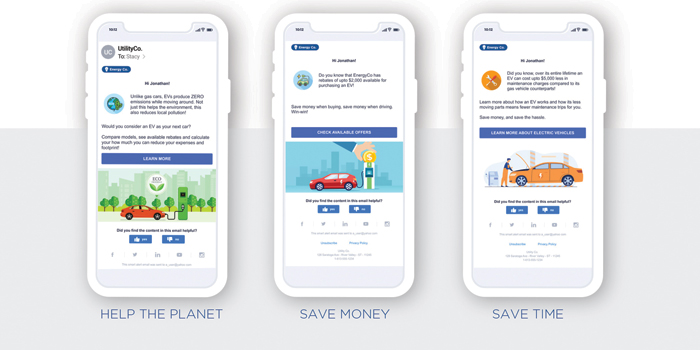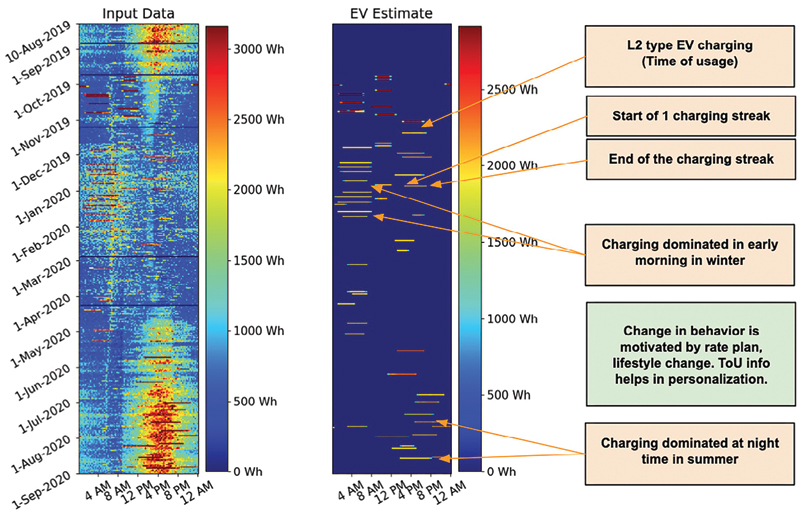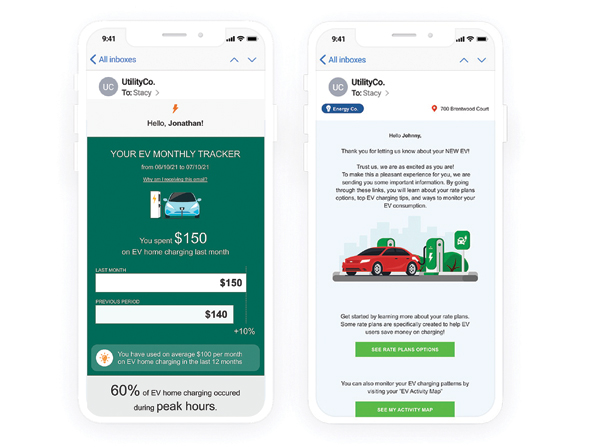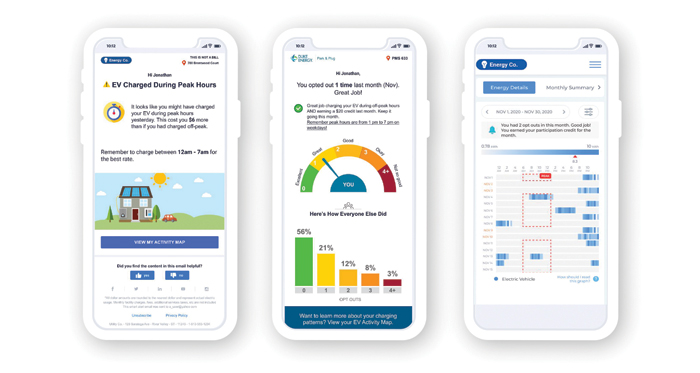Over the past decade, warnings about the impact of solar and energy storage on the utility industry have grown louder, foreshadowing that distributed energy resources (DER) like solar, battery storage, electric vehicles (EVs) and smart energy devices are coming, and utilities need to prepare. The truth, however, is that widespread DER adoption isn’t just looming on some distant horizon – it is already here.
The U.S. Department of Energy estimates that there will be in excess of $110 billion in DERs deployed nationwide by 2025, not including the billions in infrastructure spending that will also be required to integrate distributed resources with the grid.
Solar, for one, has topped 120 GW installed capacity in the U.S. Nearly 12 GW of battery storage are on the grid today (80% of which has been deployed since 2020 alone), and there are currently 10 million electric vehicles (EVs) on the road today with an expected 145 million by 2030.
At the same time, the Federal Energy Regulatory Commission (FERC) is leveling the economic playing field between solar, battery storage, electric vehicles (EVs), smart energy devices and other DERs. Approved in September 2020, FERC Order 2222 is becoming a reality for state regulatory agencies, independent system operators (ISOs) and regional transmission organizations (RTOs), who must all develop plans to give DERs access to wholesale energy markets.
While several utilities are making strides in small-scale DER integration and efforts like these are important first steps – like Arizona Public Service’s 8 megawatt hours of battery storage to defer the capital investment of a transmission reconductoring – the time has come for utilities to do more than proof-of-concept deployments and pilot electrification projects.
Why? The longer utilities wait to engage DERs at an enterprise level, the more difficult and expensive it will be to coordinate and manage rapid DER expansion of their grids. DER deployments will only accelerate as cost of ownership continues to fall and wholesale markets unlock additional benefits, whether utilities choose to take an active role or not.
The future is electric
When it comes to managing rapid DER expansions on the grid, EVs are top of mind for many utilities. With EV registrations climbing three times faster than overall U.S. vehicle registrations, sales soaring nearly 200% and state mandates phasing out gasoline vehicles, many wonder if the electric grid can sustain an exponential increase in demand.
While the basis for this concern stems from the amount of electricity needed to charge these vehicles, the problem arises more specifically from when these vehicles are charged. For the majority of EV owners, charging is most convenient at home. This also means, however, the most popular charging times occur when owners return home from work each day, coinciding with existing residential peak electricity demands. Though this may seem inconsequential at first, over time, utilities suffer from a more congested grid and consumers will experience higher electricity costs. EV adoption trends also cluster in localized areas, and demand spikes typically occur within specific neighborhoods and near each other, adding further stress on the grid.
Because accommodating the influx of EVs on the grid is critical, many utilities are looking to introduce new services like home and public charging infrastructure that simultaneously bolsters grid reliability. But, this also leaves many utilities grappling with the question of where to start.
Navigating the EV journey
Most utilities will first need to understand their current position on the EV-adoption spectrum. In the U.S., EV penetration varies significantly by geographic region and therefore determines the level of sophistication needed to support a utility’s upcoming strategies and investments. Depending on how little or how much a utility is already engaging with EVs, four phases of a successful EV journey can be activated sequentially or in parallel:
1. Accelerating customer awareness, education and adoption
Utilities across the country are under pressure to reduce carbon emissions, and EVs can play a key role in advancing their organization’s electrification initiatives. A survey conducted at the end of 2020 by Consumer Reports found that 71% of U.S. drivers would consider buying an EV in the future and over 70% understood their environmental benefits. Yet the same survey found that only 30% of respondents said they knew much about EVs.
Utilities with little EV adoption in their territory – think 0% to 0.5% penetration – will benefit most from investing in customer education that supports the adoption of EVs within their territory. This can range from informing customers on the intertwined relationship between EVs and the utility, enhancing customer engagement that normalizes the purchase of EVs and offering discounts on things like smart chargers to help promote EV adoption among customers.
2. Analyzing the EVs on the road today and forecasting where EVs will be tomorrow
Utilities with 1% to 3% penetration are beginning to experience noticeable EV pickup, yet have a limited understanding of how this added energy demand affects their grid.
Historically, utilities have relied on DMV data to identify EVs registrations but that data is difficult to obtain in a timely manner and does not update on an ongoing basis or provide charging insights. Fortunately, many utilities already possess this information deep within the data collected by smart meters and by applying artificial intelligence (AI) solutions to utility data, utilities can unearth granular-level insights into individual households within their territory, like pinpointing homes with EVs and further identifying territory-wide charging times and charger sizes. This information helps utilities determine an organization-wide, data-driven plan for accommodating EVs—from effective grid management and customer engagement to rate design and infrastructure investment.
3. Shifting EV load using behavioral mechanisms
Grid congestion and capacity could quickly become a problem for utilities with higher percentages of EVs if all EVs were to charge at the same peak times. That’s why utilities with above-average adoption will find themselves considering ways to prevent these EV charging peaks. One way is to expand capacity via infrastructure investments – though this is highly costly and time-consuming. A more favorable alternative is to develop behavioral managed charging solutions.
Leveraging the same end-to-end data analytics as above, utilities can implement behavioral managed charging strategies to better inform drivers about their individual charging patterns, with the goal of helping customers shift their charging patterns more optimally. This includes switching charging times to off-peak hours or encouraging more sustainable charging behaviors backed by incentives.
4. Implementing managed charging
Utilities with significant EV penetration, typically 2% to 3%, are familiar with the need for load shifting and will want to – if they haven’t already – actively engage customers with behavioral nudges targeted to motivate these shifts from peak charging to off-peak charging. In addition to behavioral charging, this group is best poised for direct load optimization – also called managed charging.
California utilities, which have by far the highest share of EVs of any U.S. state and the most concern for charge management strategies, are prime examples. Utilities can offer managed charging as an automated way for customers to participate in the clean energy economy while enabling utilities to better manage grid loads.
Unearthing valuable customer data
While most consumers agree changes need to happen on the grid to support long-term electrification and decarbonization goals, few will be self-motivated to change their behavior to be more grid-friendly. Fortunately, using this combination of AI and the utility's existing smart meter data mentioned earlier, utilities have the power to effectively motivate customers toward grid-optimal charging behaviors in which the customer can benefit from lower monthly electricity bills by charging during off-peak hours and utilities can create more balanced grid loads.
What’s more, is that utilities can do all this without installing intrusive on-site monitoring hardware or relying on participation in customer surveys – the two most traditional methods of data collection. Not only is the equipment expensive, but this approach is also highly dependent on the participation of homeowners.
Market research data and surveys also have their shortcomings because it only reflects in-depth knowledge of a representative group of customers. The same is true of surveys. By definition, proxies are always proxies and will lack a precise picture of all EV customers. Another downside to generalized data about customers: it cannot keep up with changes. For instance, COVID-19 dramatically changed charging and driving behaviors. Data based on results gathered in the past will not reflect those changes.
But with 100 million smart meters already deployed across the country, utilities can collect existing data easier and more cost-effectively. Applying advanced data analytics and AI to this data then enables utilities to learn about each customer at a granular level, including charging patterns, charger type and other energy behaviors.
The power of behavioral nudges
Equipped with this knowledge, utilities are now able to optimize marketing and grid management strategies. For example, utilities can target specific EV owners with the greatest potential for load shifting, based on their peak usage and send personalized messaging (via traditional paper mail, digital emails or even text alerts) that educate these customers on their individual charging patterns and energy consumption. This messaging can also include personalized incentives encouraging these customers to shift the hours they normally charge their vehicle to off-peak hours, helping utilities decrease peak load demands.
EV customers may receive email notifications or alerts from their utility when they are charging on-peak in addition to monthly summary reports and web-based activity heat maps that keep EV owners aware of their specific charging behavior to encourage load shifting. When a utility feels ready, it can also implement more sophisticated EV charging programs, like managed charging. Here, EV owners would enroll in managed charging and the utility would remotely manage vehicle charging for optimal grid flexibility that both minimizes customer electricity costs and ensures energy supply is balanced during peak loads.
When the financial savings associated with charging during off-peak hours still is not enough motivation, utilities can further reward with a monetary credit per month if they routinely charge off-peak. Each month, customers could receive a recap indicating whether they met their goal and received the incentive.
Knowing which customers charge their EVs during peak hours eliminates the need to run expensive marketing campaigns to recruit EV owners into load-shifting programs and avoids incentivizing EV owners with monetary rewards who already charge their EVs during off-peak hours.
Reshaping the modern electricity grid
Data analytics will be the cornerstone enabling utilities to evolve with the grid and energy customers, and through AI-driven EV programs, improve grid management for a smarter, more efficient grid while putting money back into the pockets of customers. Learning to maximize EV upside and mitigate EV-related grid instability utilities can take the first step in reshaping their relationship with the energy grid and preparing for the road ahead.
The shape of today’s electricity grid is changing dramatically as efforts to decarbonize the global economy materialize, and DER deployments will continue to accelerate whether utilities choose to take an active role in it or not. To successfully navigate – and more importantly – benefit from the DER revolution, a combination of agile utility programs and a future ready-ready mindset will be essential.
 Abhay Gupta founded Bidgely, with the mission of leveraging data to transform the utility industry. As CEO, Abhay has led the company from concept to market leadership. Prior to Bidgely, Abhay worked at a combination of energy and technology companies including Grid Net, Echelon and Sun Microsystems. He holds a B. Tech from the Indian Institute of Technology Delhi, M.S. from University of Southern California and M.B.A. from Santa Clara University.
Abhay Gupta founded Bidgely, with the mission of leveraging data to transform the utility industry. As CEO, Abhay has led the company from concept to market leadership. Prior to Bidgely, Abhay worked at a combination of energy and technology companies including Grid Net, Echelon and Sun Microsystems. He holds a B. Tech from the Indian Institute of Technology Delhi, M.S. from University of Southern California and M.B.A. from Santa Clara University.











